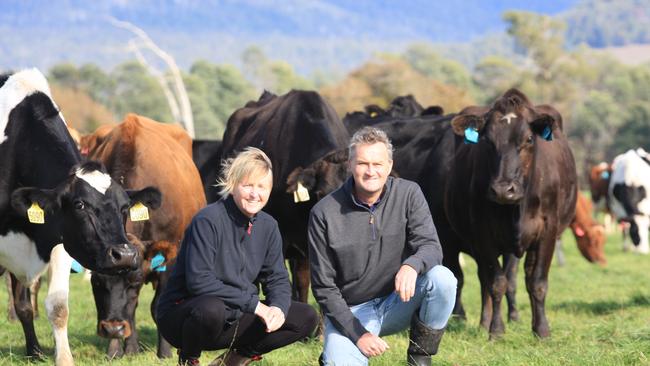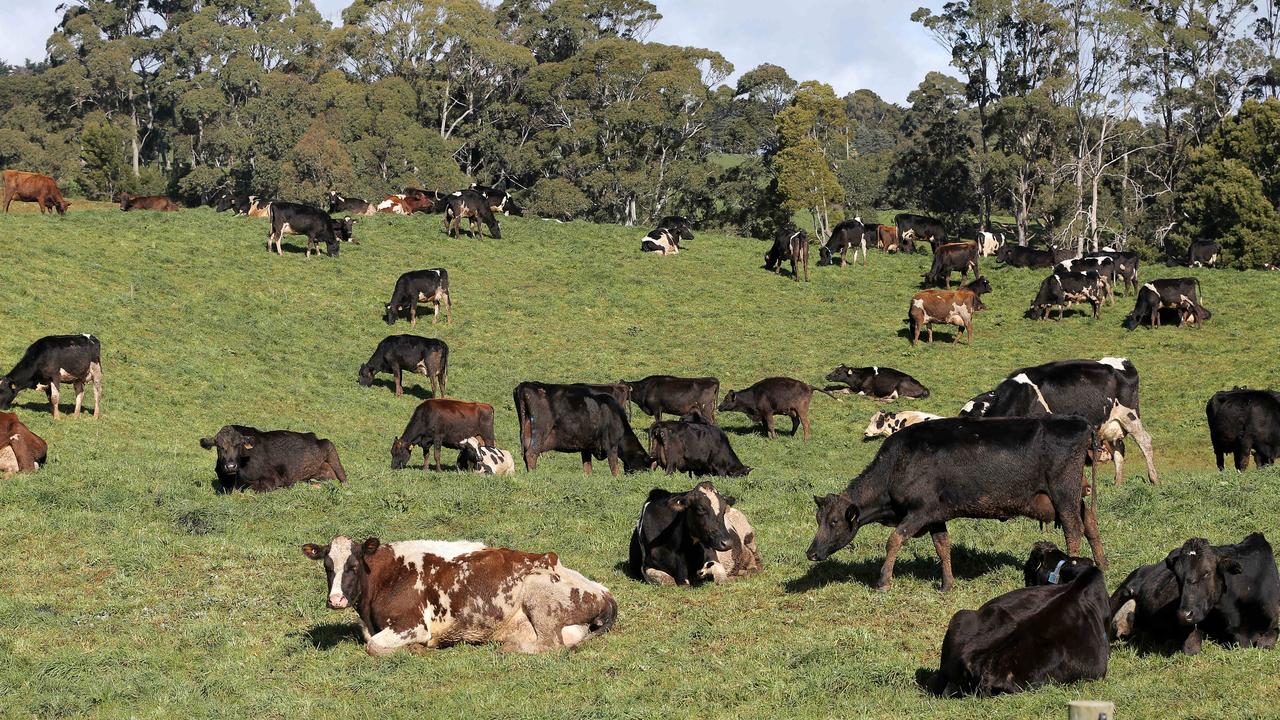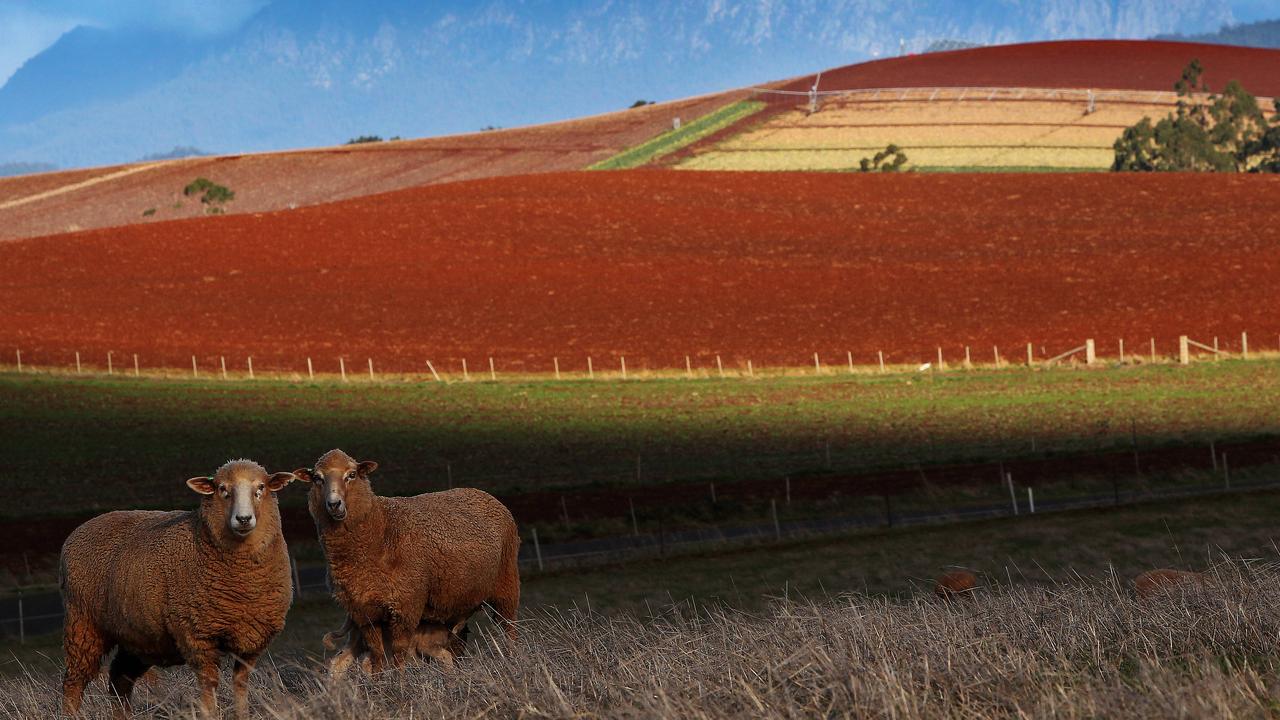Four crowns for push to top
When a dairying couple first took part in a benchmarking competition they were in the bottom half. They wanted to do better — and they have achieved a first for their state.

WINNING the state’s top dairy award for the fourth time was a surprise for Kim and Grant Archer.
The couple first won the Tasmanian Dairy Business of the Year award in 2003 when farming at Mella. They won again in 2012 and 2015 while sharefarming on other properties before claiming the going this year – the first to win the award four times.
The couple have taken part in the annual competition for a long time and Mr Archer said he recognised early on the value of benchmarking as a tool to improve.
“Initially when we first started a long time ago we weren’t performing very well,” he said.
“We were on our farm at Mella and we were in the bottom half. I sort of said to myself we need to be doing better, because if I’m going to make this my career I need to be doing better and be successful at it.”
After setting a goal to get into the top 20 per cent, Mr Archer said the benchmarking helped them identify how they were tracking compared with other farms and highlighted key areas to work on.
“Initially the biggest thing was that we weren’t running enough cows, our stocking rate was too conservative,” Mr Archer said.
“All the best farms all had high stocking rates so that’s what we did first and it all just flowed on.”
Now the couple run Active Dairies which includes their original farm at Mella, run by Leigh and Kellie Schuuring, and the Mountain Vale operation near Bracknell.
The Archers bought the 124ha Mountain Vale in 2013. Soon after they bought an adjoining 134ha grazing block, put in a centre pivot and added land from an adjacent property and a second pivot.
By 2014-2015 their herd number had increased significantly and they milked about 1000 cows.
They have also built a new 60- unit rotary dairy and a purpose-built calf-rearing shed.
“We went to a fair bit of trouble to make sure the rotary was central to the farm,” Mr Archer said.
They now have 546ha all up and Mr Archer said development had been an ongoing process.
“We’ve put in all new laneways, all new fencing and a whole new water system,” he said. “We put in 63mm water pipe because on some of the share farms we had trouble with getting enough water supply to the cows. A lot of it is looped lines and all the paddocks have water troughs and some have two.”
Pasture renovation has also been a big focus and about 60 to 70 per cent of the farm has new pastures. He said they had experimented with pastures mixes and used different varieties in dryland and irrigated paddocks.
This has meant moving away from white clover varieties in dryland pastures and sowing sub- clovers along with plantain, which Mr Archer said seemed to handle dry conditions better and persist.
About 22 per cent of the farm is irrigated. This will increase to 30 per cent once the installation of a third centre pivot is completed.
Water is supplied from the Liffey River and bores along with some on-farm storage.
Being situated near the foothills of the Western Tiers, Mr Archer said the farm enjoyed a naturally high rainfall.
This year they milked 1300 cows during the spring peak and next season they plan to milk 1400.
During spring, the farm operates on a traditional twice-a-day milking routine but just before Christmas the herds are changed over to three milkings in two days.
Mr Archer said they had been among the first to adopt that system back in 2009 or 2010.
“The main advantage is for the cows. The cows end up in better body condition and they tend to walk to and from the dairy a lot better because they have one less walk and they flow through the dairy better as well.”
While pasture management and consumption is carefully monitored, Mr Archer said they
increased supplementary feed, including grain and silage, as needed to maintain production.
“Last year we only fed about a tonne of grain per cow but this year that will be a tonne and a half.
“So we will vary depending on the season, the milk price, the grain price and the costs of other feed.”
During the award season the average production was 435kg of milk solids per cow, but this year that will be about 465kg, an increase of about 14 per cent.
“The main thing I put it down to initially was better cow condition.”
Mr Archer said this had been a focus at the end of last season and through winter, with the average body condition score at about five, up from an estimated 4.6 or 4.7.
He said this extra condition meant higher milk production peak during spring, which carried over in higher-than-average production for the rest of the season.
They bought a run-off block last February that allowed greater control over the cows in the winter.
All cows are wintered off farm, apart from heifers, to help build up a good feed wedge before calving.
The farm has a team of about six staff with extra during calving time.
Their crossbred cow herd includes New Zealand composite bull genetics and Scandinavian red breed genetics so now the herd has a three-way cross.
Longevity is a trait sought in the breeding program along with production, fertility and structural factors such as correct feet.
He has used the farm’s natural production curve to ensure early calving to take advantage of spring.
Pasture management is crucial to ensure utilisation is maximised.
“We’re very strict on it in the spring, we have graze down to 1600kg religiously and we’ve got a system in place to achieve that.”
They buy in high-quality silage in spring from long-term suppliers and only cut silage when there is a genuine surplus of pasture. The silage is used in summer when pastures in dryland areas decline.
While most of the development is now completed Mr Archer does not rule out further expansion or taking on another property.


